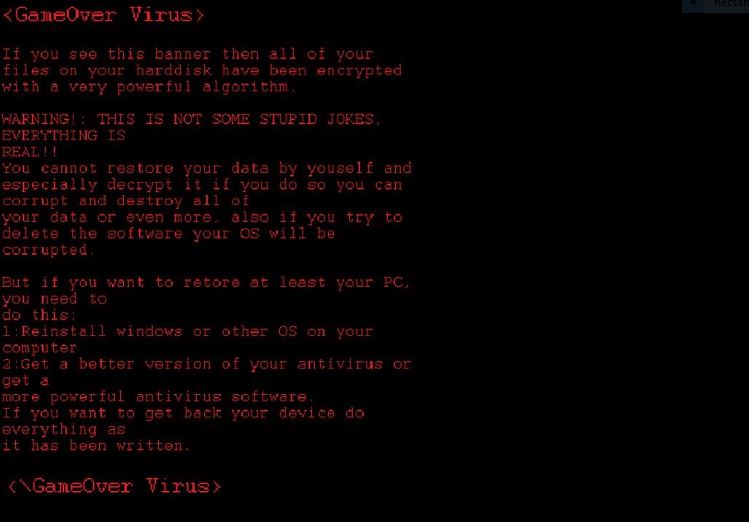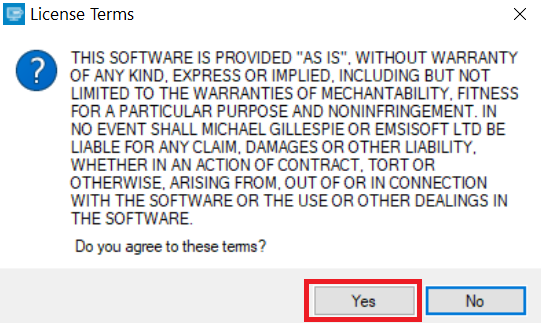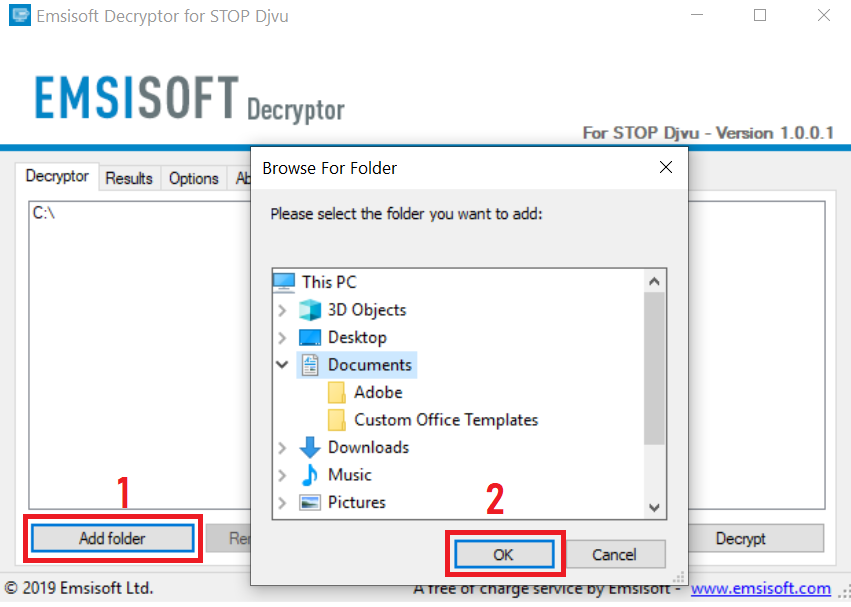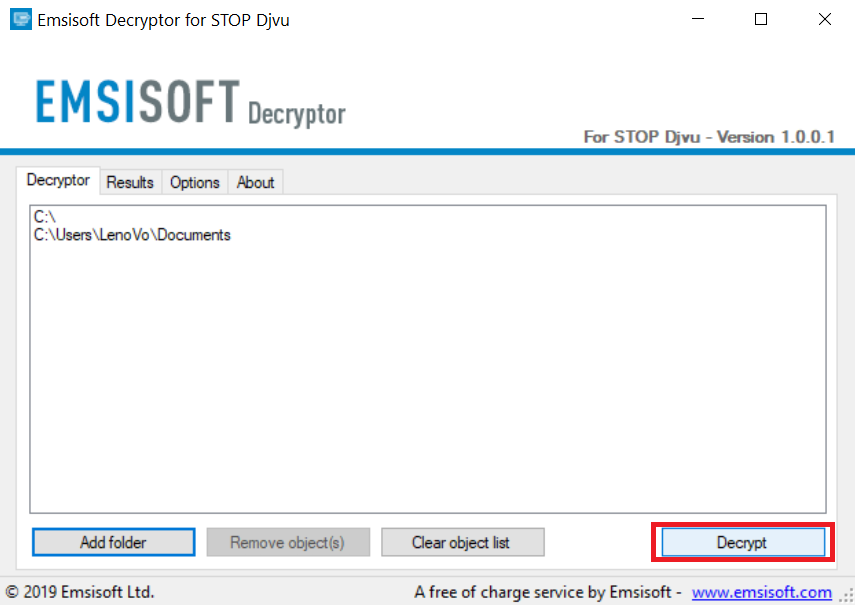The GameOver Virus is a test release ransomware targeting users on a global scale. The currently released samples of it are early versions that may be updated in further iterations. Refer to our in-depth article for a technical analysis and full removal instructions.

Threat Summary
| Name | GameOver |
| Type | Ransomware, Cryptovirus |
| Short Description | The ransomware encrypts sensitive information on your computer system with the .gameover extensions and demands a ransom to be paid to allegedly recover them. |
| Symptoms | The ransomware will encrypt your files with a strong encryption algorithm. |
| Distribution Method | Spam Emails, Email Attachments |
| Detection Tool |
See If Your System Has Been Affected by malware
Download
Malware Removal Tool
|
User Experience | Join Our Forum to Discuss GameOver. |
| Data Recovery Tool | Windows Data Recovery by Stellar Phoenix Notice! This product scans your drive sectors to recover lost files and it may not recover 100% of the encrypted files, but only few of them, depending on the situation and whether or not you have reformatted your drive. |

GameOver Virus – Distribution Ways
The GameOver virus is distributed via the most common methods attributed to ransomware of this type. At the moment the captured strains are relatively low which does not showcase on single method used for distributing it.
A common way of distributing the threat is the coordination of SPAM email messages. They use social engineering techniques utilizing web elements from well-known companies and Internet services thereby confusing the targets into believing that they are being sent by legitimate senders. Usually the ransomware files (GameOver virus) are either hyperlinked or directly attached.
The hackers can also construct fake download sites using the same tactic. They will take the web elements from famous site and attempt to recreate them using similar sounding domain names and design. These two tactics when combined are the main methods for distributing infected payloads. There are two distinct types that are the most common ones:
- Application Setup Files — The GameOver virus can be embedded in software installers of popular applications. This is done by modifying the legitimate files downloaded from the official vendors with the virus code. The hackers typically choose software such as: creativity suites, productivity apps and system utilities.
- Documents — Using a similar technique the criminals behind the GameOver virus can modify documents such as text files, presentations, databases and spreadsheets. When they are opened by the victim users a notification window will pop-up asking them to enable the built-in macros (scripts). As soon as this is done the virus sequence will be initiated.
The threat can also be spread via browser hijackers — they are malicious extensions made for the most popular web browsers. They are distributed via the associated browser repositories and make use of fake customer reviews and developer credentials. Once they are installed on the appropriate browsers they will make various changes to the program’s configuration files and infect the users with the GameOver virus. Another common issue with them is that they redirect the victims to a hacker-controlled page.

GameOver Virus – In-Depth Analysis
The GameOver virus is a recently discovered threat that appears to be made by an individual hacker or a criminal group without a known identity. The iniital code analysis does not show any code taken from any of the famous ransomware families showing that it may be an original creation.
We suspect that the hackers are going to use the typical behavior tactics associated with this type of threats. Typical strains begin by calling a data harvesting which is programmed to extract sensitive information from the victim systems. There are two groups of information that are usually classified:
- Private User Data — The virus can be configured to extract information that can reveal the identity of the victims. The strings are programmed to collect information such as their name, address, phone number, interests, location and account credentials.
- Campaign Metrics — The GameOver virus can acquire information that can be used to optimize the attacks. This includes a report of the installed hardware components on the infected hosts and certain user-set operating system parameters.
This information can then be processed by a stealth protection module that bypasses any found security software. This is done by performing a signature scan for the presence of any anti-virus hosts, sandbox environments or virtual machine hosts. Their real-time engines can be bypassed or completely removed.
When the virus operations are ready to begin the system modification sequence is activated. It makes use of the fact that the infected host’s security has been penetrated and that it can take over control of any system resource. The GameOver virus can hook up to system and user processes and creates ones of its own.
In many cases the malicious scripts will include a Windows Registry manipulation process. It can affect both strings belonging to the user-installed applications and the operating system itself. As an effect of this some application features may stop working together and performance may suffer.
These changes can be related to the GameOver virus installation as a persistent threat. This will make it run every time the computer boots bypassing any security protective measures. Usually this also involves a boot recovery menu disable command which also makes it very difficult for users to use most manual recovery instructions.
In many cases advanced strains of ransomware like the GameOver virus can proceed with the installation of a Trojan component. It will set up a secure connection to a hacker-controlled server which is used to spy on the users at all times. This also allows them to take over control of the affected machines and deploy additional malware.

GameOver Virus — Encryption

The ransomware component is engaged after all prior modules have completed execution. It uses a strong cipher designed to encrypt user-owned files and then blackmail the victims for a decryption fee. This is governed by a built-in list of target file type extensions. The collected samples have been analyzed and this list has been extracted. At the moment the GameOver virus targets the following data:
.3g2, .3gp, .7z, .accdb, .aes, .ARC, .asc, .asf, .asm, .asx, .avi, .backup, .bak, .bat, .brd, .bundle, .c,
.cgm, .cmd, .cpp, .crt, .cs, .csproj, .csr, .csv, .db, .dbf, .dch, .der, .dip, .djvu, .doc, .docb, .docm,
.docx, .dot, .dotx, .dwg, .edb, .eml, .flv, .frm, .gif, .gpg, .gz, .htm, .html, .hwp, .Iay6, .ibd, .iso,
.jar, .jpeg, .jpg, .js, .jse, .key, .lay, .lbd, .log, .m2ts, .max, .mdf, .mdp, .mid, .midi, .mkv, .mml,
.mov, .mp3, .mp4, .mpeg, .mpg, .msg, .myd, .myi, .nef, .ocx, .odg, .odp, .odp, .ods, .odt, .onetoc2, .ost,
.otg, .otp, .ott, .PAQ, .pas, .pdf, .pern, .pfx, .php, .png, .pot, .potm, .potx, .ppam, .pps, .ppsm, .ppsx,
.ppt, .pptm, .pptx, .pst, .pub, .py, .pyc, .pyd, .pyo, .rar, .raw, .rm, .rpa, .sb2, .sch, .sh, .sin, .sldm,
.sldx, .slk, .snt, .sql, .sql, .sqlite3, .sqlitedb, .stc, .std, .sti, .stw, .suo, .svg, .swf, .sxc, .sxd,
.sxi, .sxm, .sxw, .tar, .tar, .tbk, .tiff, .txt, .uop, .uot, .vb, .vbe, .vbproj, .vbs, .vcd, .vdi, .vdmk,
.vmx, .vob, .vsd, .vsdx, .wks, .wma, .wncry, .wrav, .xdata, .xlc, .xlm, .xls, .xlsb, .xlsm, .xlsx, .xlt,
.xltm, .xltx, .xlw, .zip
Instead of a traditional ransomware note it uses a lockscreen instance which prohibits ordinary computer interaction until the virus is completely removed from the system. It spawns a black application frame that reads the following message:
If you see this banner then all of your files on your harddisk have been encrypted with a very powerful algorithm.
WARNING!: THIS IS NOT SOME STUPID JOKES, EVERYTHING IS REAL ! !
You cannot restore your data by youself and especially decrypt it if you do so you can corrupt and destroy all of your data or even more, also if you try to delete the software your OS will be corrupted.
But if you want to retore at least your PC, you need to do this:
1: Reinstall windows or other OS on your computer
2: Get a better version of your antivirus or get a more powerful antivirus software.
If you want to get back your device do everything as it has been written.
<\GameOver Virus>

Remove GameOver Ransomware Virus and Restore .gameover Files
If your computer got infected with the GameOver ransomware virus, you should have a bit of experience in removing malware. You should get rid of this ransomware as quickly as possible before it can have the chance to spread further and infect other computers. You should remove the ransomware and follow the step-by-step instructions guide provided below.
- Step 1
- Step 2
- Step 3
- Step 4
- Step 5
Step 1: Scan for GameOver with SpyHunter Anti-Malware Tool



Ransomware Automatic Removal - Video Guide
Step 2: Uninstall GameOver and related malware from Windows
Here is a method in few easy steps that should be able to uninstall most programs. No matter if you are using Windows 10, 8, 7, Vista or XP, those steps will get the job done. Dragging the program or its folder to the recycle bin can be a very bad decision. If you do that, bits and pieces of the program are left behind, and that can lead to unstable work of your PC, errors with the file type associations and other unpleasant activities. The proper way to get a program off your computer is to Uninstall it. To do that:


 Follow the instructions above and you will successfully delete most unwanted and malicious programs.
Follow the instructions above and you will successfully delete most unwanted and malicious programs.
Step 3: Clean any registries, created by GameOver on your computer.
The usually targeted registries of Windows machines are the following:
- HKEY_LOCAL_MACHINE\Software\Microsoft\Windows\CurrentVersion\Run
- HKEY_CURRENT_USER\Software\Microsoft\Windows\CurrentVersion\Run
- HKEY_LOCAL_MACHINE\Software\Microsoft\Windows\CurrentVersion\RunOnce
- HKEY_CURRENT_USER\Software\Microsoft\Windows\CurrentVersion\RunOnce
You can access them by opening the Windows registry editor and deleting any values, created by GameOver there. This can happen by following the steps underneath:


 Tip: To find a virus-created value, you can right-click on it and click "Modify" to see which file it is set to run. If this is the virus file location, remove the value.
Tip: To find a virus-created value, you can right-click on it and click "Modify" to see which file it is set to run. If this is the virus file location, remove the value.
Before starting "Step 4", please boot back into Normal mode, in case you are currently in Safe Mode.
This will enable you to install and use SpyHunter 5 successfully.
Step 4: Boot Your PC In Safe Mode to isolate and remove GameOver





Step 5: Try to Restore Files Encrypted by GameOver.
Method 1: Use STOP Decrypter by Emsisoft.
Not all variants of this ransomware can be decrypted for free, but we have added the decryptor used by researchers that is often updated with the variants which become eventually decrypted. You can try and decrypt your files using the instructions below, but if they do not work, then unfortunately your variant of the ransomware virus is not decryptable.
Follow the instructions below to use the Emsisoft decrypter and decrypt your files for free. You can download the Emsisoft decryption tool linked here and then follow the steps provided below:
1 Right-click on the decrypter and click on Run as Administrator as shown below:

2. Agree with the license terms:

3. Click on "Add Folder" and then add the folders where you want files decrypted as shown underneath:

4. Click on "Decrypt" and wait for your files to be decoded.

Note: Credit for the decryptor goes to Emsisoft researchers who have made the breakthrough with this virus.
Method 2: Use data recovery software
Ransomware infections and GameOver aim to encrypt your files using an encryption algorithm which may be very difficult to decrypt. This is why we have suggested a data recovery method that may help you go around direct decryption and try to restore your files. Bear in mind that this method may not be 100% effective but may also help you a little or a lot in different situations.
Simply click on the link and on the website menus on the top, choose Data Recovery - Data Recovery Wizard for Windows or Mac (depending on your OS), and then download and run the tool.
GameOver-FAQ
What is GameOver Ransomware?
GameOver is a ransomware infection - the malicious software that enters your computer silently and blocks either access to the computer itself or encrypt your files.
Many ransomware viruses use sophisticated encryption algorithms to make your files inaccessible. The goal of ransomware infections is to demand that you pay a ransom payment to get access to your files back.
What Does GameOver Ransomware Do?
Ransomware in general is a malicious software that is designed to block access to your computer or files until a ransom is paid.
Ransomware viruses can also damage your system, corrupt data and delete files, resulting in the permanent loss of important files.
How Does GameOver Infect?
Via several ways.GameOver Ransomware infects computers by being sent via phishing emails, containing virus attachment. This attachment is usually masked as an important document, like an invoice, bank document or even a plane ticket and it looks very convincing to users.
Another way you may become a victim of GameOver is if you download a fake installer, crack or patch from a low reputation website or if you click on a virus link. Many users report getting a ransomware infection by downloading torrents.
How to Open .GameOver files?
You can't without a decryptor. At this point, the .GameOver files are encrypted. You can only open them once they are decrypted using a specific decryption key for the particular algorithm.
What to Do If a Decryptor Does Not Work?
Do not panic, and backup the files. If a decryptor did not decrypt your .GameOver files successfully, then do not despair, because this virus is still new.
Can I Restore ".GameOver" Files?
Yes, sometimes files can be restored. We have suggested several file recovery methods that could work if you want to restore .GameOver files.
These methods are in no way 100% guaranteed that you will be able to get your files back. But if you have a backup, your chances of success are much greater.
How To Get Rid of GameOver Virus?
The safest way and the most efficient one for the removal of this ransomware infection is the use a professional anti-malware program.
It will scan for and locate GameOver ransomware and then remove it without causing any additional harm to your important .GameOver files.
Can I Report Ransomware to Authorities?
In case your computer got infected with a ransomware infection, you can report it to the local Police departments. It can help authorities worldwide track and determine the perpetrators behind the virus that has infected your computer.
Below, we have prepared a list with government websites, where you can file a report in case you are a victim of a cybercrime:
Cyber-security authorities, responsible for handling ransomware attack reports in different regions all over the world:
Germany - Offizielles Portal der deutschen Polizei
United States - IC3 Internet Crime Complaint Centre
United Kingdom - Action Fraud Police
France - Ministère de l'Intérieur
Italy - Polizia Di Stato
Spain - Policía Nacional
Netherlands - Politie
Poland - Policja
Portugal - Polícia Judiciária
Greece - Cyber Crime Unit (Hellenic Police)
India - Mumbai Police - CyberCrime Investigation Cell
Australia - Australian High Tech Crime Center
Reports may be responded to in different timeframes, depending on your local authorities.
Can You Stop Ransomware from Encrypting Your Files?
Yes, you can prevent ransomware. The best way to do this is to ensure your computer system is updated with the latest security patches, use a reputable anti-malware program and firewall, backup your important files frequently, and avoid clicking on malicious links or downloading unknown files.
Can GameOver Ransomware Steal Your Data?
Yes, in most cases ransomware will steal your information. It is a form of malware that steals data from a user's computer, encrypts it, and then demands a ransom in order to decrypt it.
In many cases, the malware authors or attackers will threaten to delete the data or publish it online unless the ransom is paid.
Can Ransomware Infect WiFi?
Yes, ransomware can infect WiFi networks, as malicious actors can use it to gain control of the network, steal confidential data, and lock out users. If a ransomware attack is successful, it could lead to a loss of service and/or data, and in some cases, financial losses.
Should I Pay Ransomware?
No, you should not pay ransomware extortionists. Paying them only encourages criminals and does not guarantee that the files or data will be restored. The better approach is to have a secure backup of important data and be vigilant about security in the first place.
What Happens If I Don't Pay Ransom?
If you don't pay the ransom, the hackers may still have access to your computer, data, or files and may continue to threaten to expose or delete them, or even use them to commit cybercrimes. In some cases, they may even continue to demand additional ransom payments.
Can a Ransomware Attack Be Detected?
Yes, ransomware can be detected. Anti-malware software and other advanced security tools can detect ransomware and alert the user when it is present on a machine.
It is important to stay up-to-date on the latest security measures and to keep security software updated to ensure ransomware can be detected and prevented.
Do Ransomware Criminals Get Caught?
Yes, ransomware criminals do get caught. Law enforcement agencies, such as the FBI, Interpol and others have been successful in tracking down and prosecuting ransomware criminals in the US and other countries. As ransomware threats continue to increase, so does the enforcement activity.
About the GameOver Research
The content we publish on SensorsTechForum.com, this GameOver how-to removal guide included, is the outcome of extensive research, hard work and our team’s devotion to help you remove the specific malware and restore your encrypted files.
How did we conduct the research on this ransomware?
Our research is based on an independent investigation. We are in contact with independent security researchers, and as such, we receive daily updates on the latest malware and ransomware definitions.
Furthermore, the research behind the GameOver ransomware threat is backed with VirusTotal and the NoMoreRansom project.
To better understand the ransomware threat, please refer to the following articles which provide knowledgeable details.
As a site that has been dedicated to providing free removal instructions for ransomware and malware since 2014, SensorsTechForum’s recommendation is to only pay attention to trustworthy sources.
How to recognize trustworthy sources:
- Always check "About Us" web page.
- Profile of the content creator.
- Make sure that real people are behind the site and not fake names and profiles.
- Verify Facebook, LinkedIn and Twitter personal profiles.













